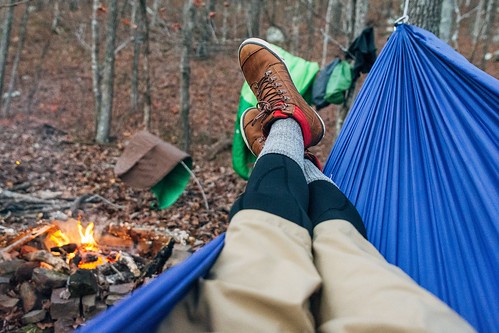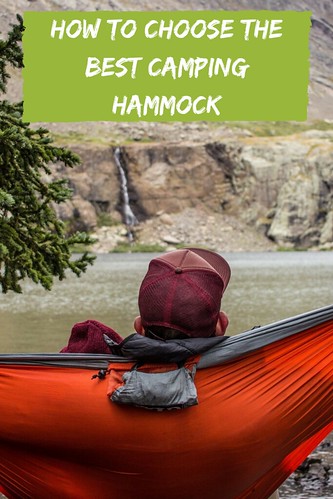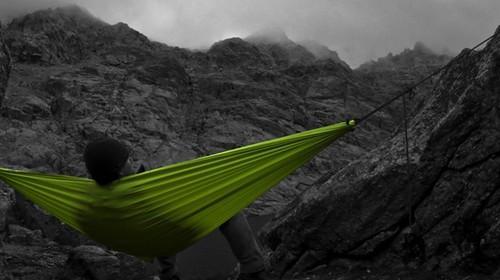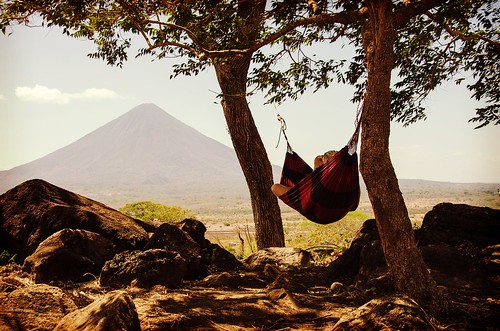Backpacking, hiking, and camping offer excellent opportunities for adventure and getting closer to nature. They also provide some great travel alternatives that do not involve gas stations, baggage rules for airlines, and emptying your wallet. While tents are still the standard for outdoor sleeping solutions, camping hammocks offer a comfortable, useful, money-saving alternative if you want to get really adventurous.

However, choosing a hammock is not as easy as it seems. Many of the factors involved can easily be overlooked by someone buying their first one, and you may not realize the importance of some of these aspects until you are uncomfortably hanging from a tree in the middle of the woods. Not to worry: this guide will inform you about all the big considerations and the more subtle factors that go into choosing your very first backpacking hammock.

Hammock Types
These are not the old backyard hammocks with the wooden spreader bars and the knotted ends; these are the professional, practical hammocks that hardcore backpackers and hikers use for a camping experience that is as close to nature as it gets.
Parachute Nylon Singles
These are incredibly durable, light enough to carry for many miles, and fold up to fit into any backpack. The nylon material provides a small amount of stretch that makes them more comfortable and flexible to set up. They are great for a single camper and are comfortable enough for several night’s worth of sleep.
Parachute Nylon Doubles
Essentially wider, larger versions of the parachute nylon singles, the doubles can fit two campers, in case you plan on having some outdoor snuggling. While they are technically large enough for this, it can be difficult for two people to comfortably sleep all night, even with the extra space.
Ultralight Hammocks
The hammocks of the ultralight variety are designed with decreased weight in mind to make for lighter travel. Due to this, many of them do trade weight for durability and comfort. They are great for a nice nap or just relaxing with nature, but do not provide the comfortable shelter of the other models.
Expedition/Backcountry Hammocks
These are the top of the line, heavy-duty backpacking hammocks that are designed for comfort and durability. Made of the same high-denier nylon as the most durable backpacking tents, these hammocks are made to last for many nights and even more miles. They often come with added features to make camping in your hammock more comfortable and practical like bug nets, tarps, and an extra layer for sleeping pads.

Additional Considerations
Although all of these hammocks will be similar and follow the same basic concept, there are many differences between them that may make one better than the other. These considerations will vary from person to person, so it is important to decide which hammock is right for you specifically, based on the following aspects.

Dimensions
Generally speaking, the wider your hammock is, the more comfortable it will be, and most hammocks range from 4.5 feet all the way to 8.5 feet. There is much less variation in the length, as most are between seven and nine feet long.
Weight
Keeping your pack weight down is crucial to any outdoor adventure, especially if you plan to walk long distances. Even the strongest, most heavy-duty hammocks usually weigh less than two pounds.
Suspension System
Hammocks are easy to set, needing only a suspension system and a couple of trees. However, it is important to note that many hammocks do not include these devices with the hammock itself, and the straps, slings, or carabiners may be sold separately. While these provide convenience and security, some hikers simply use knotted nylon ropes to suspend their hammocks.
Cost
As with all products, you get what you pay for, and many of the best hammocks do cost more. It is important to decide whether this will only be something you use occasionally, or if you should make more of an investment for a hammock that will be used a lot.
Where will you go first, with your new hammock?
